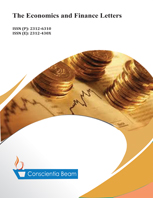Regime Changes in the Volatility of Stock Markets
DOI:
https://doi.org/10.18488/journal.29.2019.61.92.99Abstract
Modeling and forecasting the volatility of financial markets has been the subject of considerable research over the last few decades. It is a key indicator on which financial decisions are based, knowing that the behavior of financial market operators is changing. In this regard, the most popular model in the description of the volatility of financial asset returns is certainly that of the heteroskedastic type. Some authors explain that the behavior of conditional variance can come from structural changes that are not considered by standard GARCH models; hence, the motivation of this paper is to investigate the GARCH model with regime changes. Applications on several world stock indexes, namely, the American S&P 500, the Japanese Nikkei 225, and the French CAC 40 show that the model with regime changes explains the dynamics of risk more efficiently than the classical single-regime models. Furthermore, the conditional distributions of the returns are better modeled with the flexible student’s t test.

